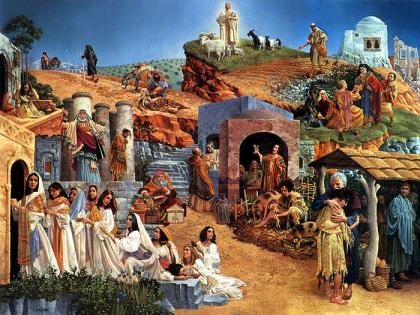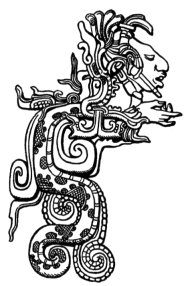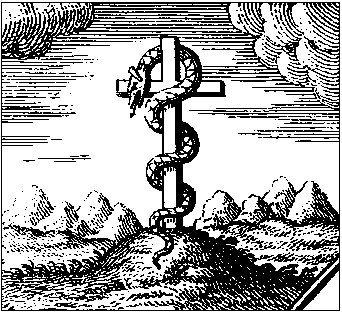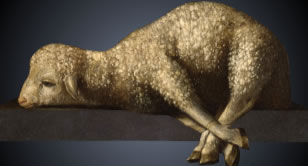I'm still thinking about patterns. I tend to see them a lot in things. Especially when reading the scriptures.
For those who don't know, I'm LDS. That is, I am a member of the Church of Jesus Christ of Latter-day Saints. We've been nicknamed Mormons because we have additional scripture which we use in companionship to the Bible called the Book of Mormon. Outsiders to our faith tend to imagine us as people who follow with blind faith, assuming we aren't allowed to ask questions or are naïve about the history of our faith. That couldn't be further from the truth. Some people might follow due to tradition. You get that in every faith, really. But our leaders actually encourage study, education, and a heap load of introspection and pondering. We just don't talk about the nitty-gritty of our faith because most people can't handle it. Milk before meat, as they say. But the basic core of the nitty-gritty is this - life was meant to be difficult.
What?... you might say.
Most people naturally hate unpleasant things. Naturally people want things to be easy. But that is like expecting a free ride through school. That is like expecting to end up like Arnold Schwarzenegger while bench-pressing pillows. Not gonna happen. In our faith we have a saying, which you are going to hate: "The natural man is an enemy to God, and has been from the Fall of Adam...." The purpose of life is not about staying in our natural state, but to grow up and transcend this natural state. We are naturally soft, flabby, and lazy. Becoming spiritually buff requires spiritual exercise.
But humankind is kind of thick-headed. So God created this physical teaching method using real-life events and actions to teach eternal principles. This method is called the Similitude.
For example, during Jesus Christ's life, he taught people through stories, parables. This enabled him to teach concepts that were abstract to those ready to receive them. Likewise, the similitude is a set up of life events (linked with religious ordinances) that teach eternal principles.
 |
| James C. Christensen's depiction of Christ's parables |
 |
| together |
Throughout the Bible there are life-event stories that act in similitude to eternal principles. I'll make a list of some of them here:
 |
| Incidentally, a Chinese girl showed me that the character for boat is composed of 3 characters that actually say 8 'mouths' on a boat. The same number of people on Noah's ark. Coincidence? Possibly. |
Abraham sacrificing his son Isaac - in similitude of the sacrifice God made when giving his son Jesus for our sins; he was chosen to bless the nations of the earth, just like with Abraham's son.
Lot, his family, and the destruction of Sodom and Gomorrah - in similitude of how you must leave sin, and never turn back to it. Lot's wife had turned back, and was 'turned into a pillar of salt' (I'm sure Lot did not go back to taste her to find out if this actual detail was true, so let's assume this is what she resembled to him). Note that God would not destroy those cities until after Lot and his family left the city.
Joseph being sold into Egypt and later saving his own family thereby - This is in similitude to the restoration of Israel. The lineage of Joseph was promised the birthright, not Judah (Judah ended up with the lineage of kings instead. The birthright refers to the Melchizedek priesthood [which is a higher priesthood than that held by the Levites], among other things). And it is the responsibility of those with the birthright to help restore Israel.
Moses leading Israel from Egypt - This is in similitude of Christ leading people from worldliness; much of the events of Moses's life was a type of Christ. From his birth, when the children were killed, to the institution of the ordinances he taught. Moses is the most revered prophet of the Jewish faith, especially since the law proceeded through him to the people. He went in between wayward Israel while they were in the wilderness, and God. This is also symbolic of what Christ does for humanity.
Manna from Heaven feeding the Israelites - The Israelites had to pick it off the ground daily, except for the Sabbath. They could not take more than their daily share, or it would go bad. Jesus himself used the phrase, "I am the bread of life." It was a physical teaching tool meant to show the Israelites that they were entirely dependent on God... something they seemed ironically clueless about for over 40 years of wandering in the wilderness
People of Israel looking to the brass serpent to live after being bitten by poisonous snakes in the wilderness - in similitude of Christ being raised on the cross. Even now people are called to look to Christ and live.
I have to note that serpent symbols are common in the Middle East (and in the Americas, by-the-way) are often used in connection with gods.
 |
| Quetzalcoatl |
 |
| brazen serpent |
 |
| caduceus |
 |
| Egyptian serpent symbols are frequent |
Jonah being in the whale for 3 days - in similitude of Jesus's death and resurrection, known as the sign of Jonah in Christian circles. It was also a sign to the Ninevites that they could be redeemed.
And many ordinances and rites of the people of Israel and before are also Similitudes. For example:
 Animal sacrifice - first born lambs, without blemish - this is in similitude of the sacrifice of Jesus Christ... a law given to Adam and Eve. Abel's sacrifice had been from his flocks. It is also one of the reason's Cain's sacrifice was unacceptable. Most religions in the ancient days practiced animal sacrifice. And, interestingly enough, most animal sacrifice ended not long after the crucifixion of Jesus of Nazareth... around 70 A.D.
Animal sacrifice - first born lambs, without blemish - this is in similitude of the sacrifice of Jesus Christ... a law given to Adam and Eve. Abel's sacrifice had been from his flocks. It is also one of the reason's Cain's sacrifice was unacceptable. Most religions in the ancient days practiced animal sacrifice. And, interestingly enough, most animal sacrifice ended not long after the crucifixion of Jesus of Nazareth... around 70 A.D.
 |
| Little known fact: the Chinese also apply red to the door posts and lintel during their New Year, in the form of paper. They say it originated as a practice to scare away a man-eating monster. |
 |
| light was often a symbol of God |
 |
| an example |
The wearing and use of phylacteries/tefillin - This is an incredibly obvious similitude of a spiritual action, done physically. These are small black boxes that contain scrolls from the Torah, worn on the upper arm to be close to the heart, on the forehead to be close to the mind, and there are others like this, at the doorways that they touch their fingers to and kiss. This physical rite was intended to remind the faithful to always keep the commandments of God in not only outward action, but in inward devotion. Notice how the strap on the arm links the box at the heart to the fingers on the hand. This indicates action, doing what your heart tells you to do.
 |
| A physical ordinance to teach an eternal principle |
I have not listed them all, of course. That would take forever, and I am hungry and need to stop writing. ;)
Fact is, God does not need our worship.
Worship is not for Him. It is for us. This is why Jesus said Man is not made for the Sabbath, but the Sabbath made for Man. It is a special day of intensive training, spiritual rejuvenation, and growth.
Remember, a real teacher is not in class for the paycheck. The class is for the benefit of the students' progress. The best teachers know this.
When we worship God, read our scriptures, and practice the devoted rites of our faith, we learn more about God, and.... to quote Tevye from Fiddler on the Roof, "what God expects him to do."
And though for many of us it is a tradition that we may not understand, one day we'll all find meaning in it. Experience itself is a blessing from God. And though life is not meant to be easy, it is meant to bring us true and lasting joy.
A gift for all of you.
No comments:
Post a Comment